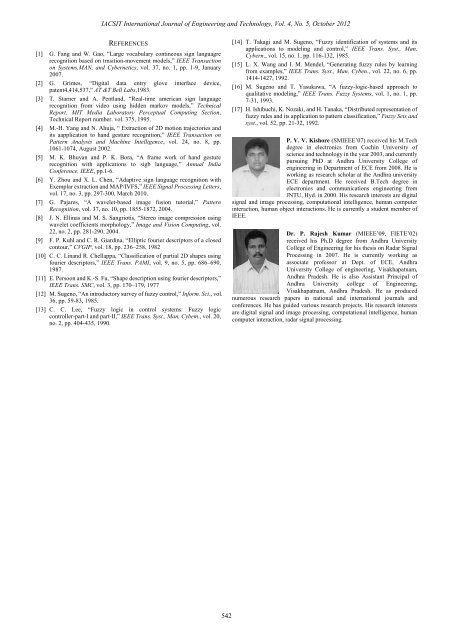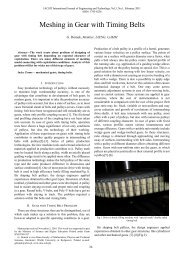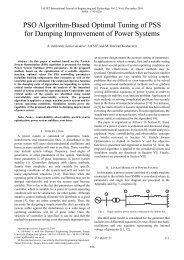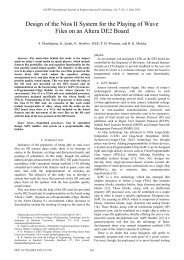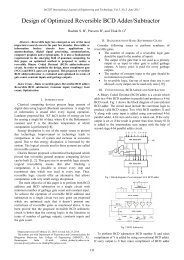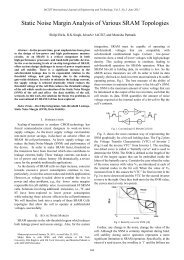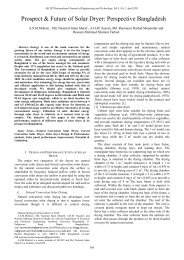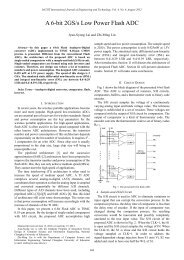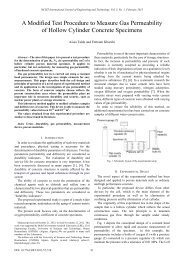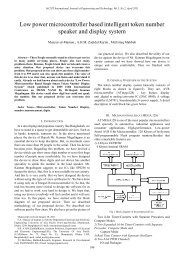A Video Based Indian Sign Language Recognition System ... - IJET
A Video Based Indian Sign Language Recognition System ... - IJET
A Video Based Indian Sign Language Recognition System ... - IJET
You also want an ePaper? Increase the reach of your titles
YUMPU automatically turns print PDFs into web optimized ePapers that Google loves.
IACSIT International Journal of Engineering and Technology, Vol. 4, No. 5, October 2012<br />
REFERENCES<br />
[1] G. Fang and W. Gao, “Large vocabulary contineous sign languagre<br />
recognition based on trnsition-movement models,” IEEE Transaction<br />
on <strong>System</strong>s,MAN, and Cybernetics, vol. 37, no. 1, pp. 1-9, January<br />
2007.<br />
[2] G. Grimes, “Digital data entry glove interface device,<br />
patent4,414,537,” AT &T Bell Labs,1983.<br />
[3] T. Starner and A. Pentland, “Real-time american sign language<br />
recognition from video using hidden markov models,” Technical<br />
Report, MIT Media Laboratory Perceptual Computing Section,<br />
Technical Report number. vol. 375, 1995.<br />
[4] M.-H. Yang and N. Ahuja, “ Extraction of 2D motion trajectories and<br />
its aapplication to hand gesture recognition,” IEEE Transaction on<br />
Pattern Analysis and Machine Intelligence, vol. 24, no. 8, pp.<br />
1061-1074, August 2002.<br />
[5] M. K. Bhuyan and P. K. Bora, “A frame work of hand gesture<br />
recognition with applications to sigb language,” Annual India<br />
Conference, IEEE, pp.1-6.<br />
[6] Y. Zhou and X. L. Chen, “Adaptive sign language recognition with<br />
Exemplar extraction and MAP/IVFS,” IEEE <strong>Sign</strong>al Processing Letters,<br />
vol. 17, no. 3, pp. 297-300, March 2010.<br />
[7] G. Pajares, “A wavelet-based image fusion tutorial,” Pattern<br />
<strong>Recognition</strong>, vol. 37, no. 10, pp. 1855-1872, 2004.<br />
[8] J. N. Ellinas and M. S. Sangriotis, “Stereo image compression using<br />
wavelet coefficients morphology,” Image and Vision Computing, vol.<br />
22, no. 2, pp. 281-290, 2004.<br />
[9] F. P. Kuhl and C. R. Giardina, “Elliptic fourier descriptors of a closed<br />
contour,” CVGIP, vol. 18, pp. 236–258, 1982<br />
[10] C. C. Linand R. Chellappa, “Classification of partial 2D shapes using<br />
fourier descriptors,” IEEE Trans. PAMI, vol. 9, no. 5, pp. 686–690,<br />
1987.<br />
[11] E. Persoon and K.-S. Fu, “Shape description using fourier descriptors,”<br />
IEEE Trans. SMC, vol. 3, pp. 170–179, 1977<br />
[12] M. Sugeno, “An introductory survey of fuzzy control,” Inform. Sci., vol.<br />
36, pp. 59-83, 1985.<br />
[13] C. C. Lee, “Fuzzy logic in control systems: Fuzzy logic<br />
controller-part-I and part-II,” IEEE Trans. Syst., Man, Cybem., vol. 20,<br />
no. 2, pp. 404-435, 1990.<br />
[14] T. Takagi and M. Sugeno, “Fuzzy identification of systems and its<br />
applications to modeling and control,” IEEE Trans. Syst., Man,<br />
Cybern., vol. 15, no. 1, pp. 116-132, 1985.<br />
[15] L. X. Wang and I. M. Mendel, “Generating fuzzy rules by learning<br />
from examples,” IEEE Trans. Syst., Man, Cyben., vol. 22, no. 6, pp.<br />
1414-1427, 1992.<br />
[16] M. Sugeno and T. Yasukawa, “A fuzzy-logic-based approach to<br />
qualitative modeling,” IEEE Trans. Fuzzy <strong>System</strong>s, vol. 1, no. 1, pp.<br />
7-31, 1993.<br />
[17] H. Ishibuchi, K. Nozaki, and H. Tanaka, “Distributed representation of<br />
fuzzy rules and its application to pattern classification,” Fuzzy Sets and<br />
syst., vol. 52, pp. 21-32, 1992.<br />
P. V. V. Kishore (SMIEEE‟07) received his M.Tech<br />
degree in electronics from Cochin University of<br />
science and technology in the year 2003, and currently<br />
pursuing PhD at Andhra University College of<br />
engineering in Department of ECE from 2008. He is<br />
working as research scholar at the Andhra university<br />
ECE department. He received B.Tech degree in<br />
electronics and communications engineering from<br />
JNTU, Hyd. in 2000. His research interests are digital<br />
signal and image processing, computational intelligence, human computer<br />
interaction, human object interactions. He is currently a student member of<br />
IEEE.<br />
Dr. P. Rajesh Kumar (MIEEE‟09, FIETE‟02)<br />
received his Ph.D degree from Andhra University<br />
College of Engineering for his thesis on Radar <strong>Sign</strong>al<br />
Processing in 2007. He is currently working as<br />
associate professor at Dept. of ECE, Andhra<br />
University College of engineering, Visakhapatnam,<br />
Andhra Pradesh. He is also Assistant Principal of<br />
Andhra University college of Engineering,<br />
Visakhapatnam, Andhra Pradesh. He as produced<br />
numerous research papers in national and international journals and<br />
conferences. He has guided various research projects. His research interests<br />
are digital signal and image processing, computational intelligence, human<br />
computer interaction, radar signal processing.<br />
542


